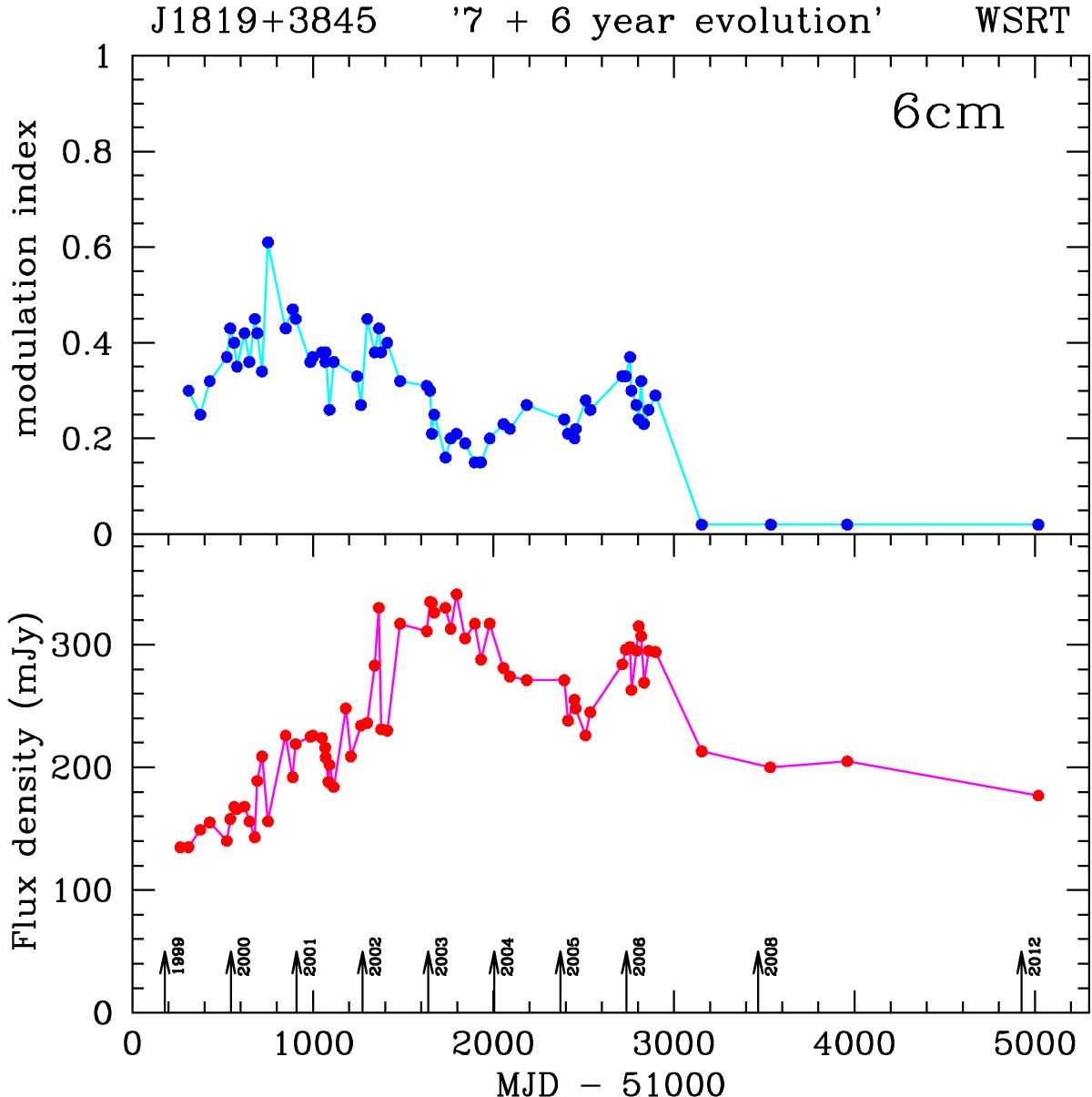Fig. 3

Long term trend in the mean flux density and modulation index at 4.9 GHz. Determining the intrinsic flux density and modulation index of a scintillating source requires a measurement that extends over a large number of independent realisations of the scintillation process. Monte Carlo simulations (Dennett-Thorpe & de Bruyn 2003) suggest that the relative error in the flux density decreases as ≈ 1/3N− 1/2 where N is the number of peak-to-peak variations, or scintles, exhibited by the lightcurve. To minimize errors in the long-term lightcurve we therefore only include data taken in observations extending over at least 6 scintles. The flux density and modulation index observed in the 8 GHz VLBA observation on 23 Feb. 2007, were scaled to 4.9 GHz using the average WSRT values observed at those frequencies in the preceding 3 years. The 2009.0 data points are from Koay et al. (2011).
Current usage metrics show cumulative count of Article Views (full-text article views including HTML views, PDF and ePub downloads, according to the available data) and Abstracts Views on Vision4Press platform.
Data correspond to usage on the plateform after 2015. The current usage metrics is available 48-96 hours after online publication and is updated daily on week days.
Initial download of the metrics may take a while.


